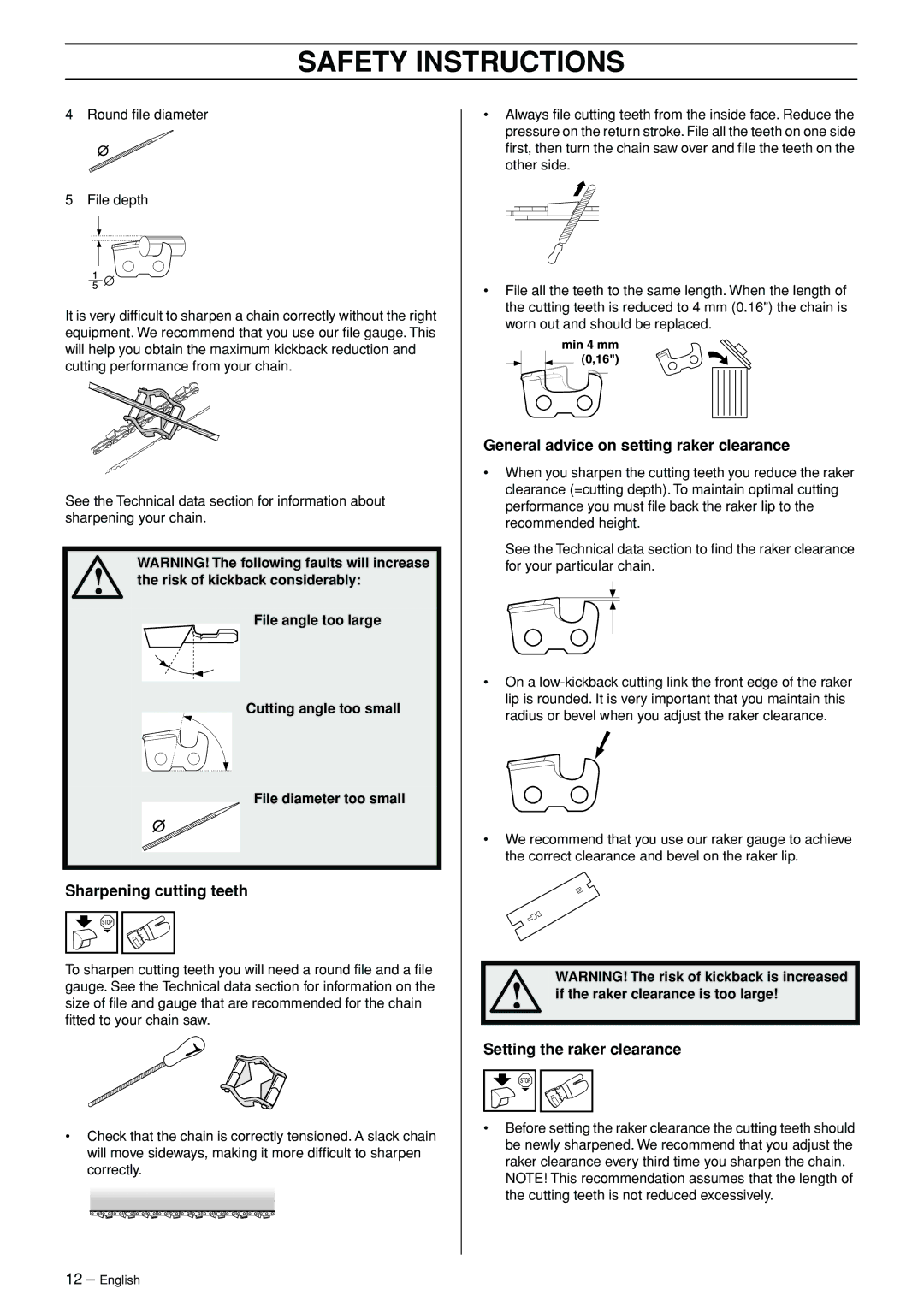
SAFETY INSTRUCTIONS
4Round file diameter
5File depth
It is very difficult to sharpen a chain correctly without the right equipment. We recommend that you use our file gauge. This will help you obtain the maximum kickback reduction and cutting performance from your chain.
See the Technical data section for information about sharpening your chain.
WARNING! The following faults will increase
!the risk of kickback considerably: File angle too large
Cutting angle too small
File diameter too small
Sharpening cutting teeth
To sharpen cutting teeth you will need a round file and a file gauge. See the Technical data section for information on the size of file and gauge that are recommended for the chain fitted to your chain saw.
•Check that the chain is correctly tensioned. A slack chain will move sideways, making it more difficult to sharpen correctly.
•Always file cutting teeth from the inside face. Reduce the pressure on the return stroke. File all the teeth on one side first, then turn the chain saw over and file the teeth on the other side.
•File all the teeth to the same length. When the length of the cutting teeth is reduced to 4 mm (0.16") the chain is worn out and should be replaced.
General advice on setting raker clearance
•When you sharpen the cutting teeth you reduce the raker clearance (=cutting depth). To maintain optimal cutting performance you must file back the raker lip to the recommended height.
See the Technical data section to find the raker clearance for your particular chain.
•On a
•We recommend that you use our raker gauge to achieve the correct clearance and bevel on the raker lip.
WARNING! The risk of kickback is increased
!if the raker clearance is too large!
Setting the raker clearance
•Before setting the raker clearance the cutting teeth should be newly sharpened. We recommend that you adjust the raker clearance every third time you sharpen the chain.
NOTE! This recommendation assumes that the length of the cutting teeth is not reduced excessively.
12 – English
